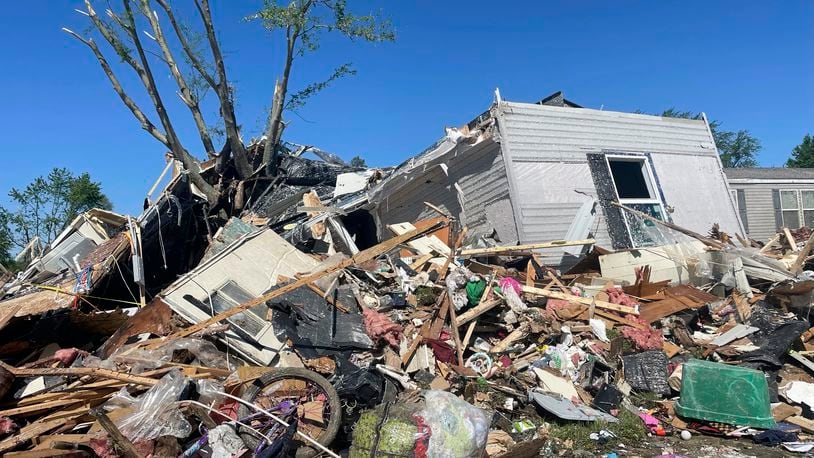Tornado emergencies were also called in Nebraska and Iowa late last month. During those storms, tornadoes flattened homes in suburban Omaha, Nebraska, and northeast, a small city of Minden, Iowa, also sustained damage.
Tuesday marked the 6th emergency issued in the U.S. this year. There were 15 issued in 2023.
Here’s what to know about a tornado emergency:
WHAT IS A TORNADO EMERGENCY?
A tornado emergency is the weather service’s highest alert level. One is issued when a few criteria are met during a rare weather situation.
“Language like that gets people out of their chairs and into basements and storm shelters,” said Kevin Laws, a National Weather Service science and operations officer in Birmingham, Alabama. “It spurs a different kind of reaction and action that you need to really save your life in those kind of events.”
There has to be an imminent or ongoing severe threat to human life and catastrophic damage. A damaging tornado also has to be confirmed visually or with radar imagery.
“You generally reserve that designation for the worst of the worst,” Laws said.
HOW IS IT DIFFERENT FROM A TORNADO WATCH OR WARNING?
When the NWS Storm Prediction Center issues a tornado watch for an area, it means tornado development is possible and people in the area should be prepared to respond quickly if a warning gets issued. It's a “heads up,” Laws said, roughly up to 10 hours in advance of the storm.
The watch area typically covers a lot of ground, such as several counties or even multiple states, the weather service said.
When a tornado warning is issued by local forecast offices, the weather radar indicates a tornado is coming, or it’s been seen already. People in the area need to act because there is “imminent danger to life and property,” according to the NWS. This could mean moving to a substantial shelter on the lowest floor possible, and quickly avoiding windows.
Warnings typically encompass a much smaller area, such as the size of a city or small county, that may be hit by a tornado.
WHEN WAS THE FIRST EMERGENCY ISSUED?
The tornado emergency designation first came about when a large and destructive tornado hit Oklahoma City, Oklahoma, on May 3, 1999, per the weather service.
It was called because the storm was expected to be too severe for the tornado warning, already in effect, to be considered sufficient language to alert people.
The “emergency” name was not yet formalized, but was used again during a storm impacting Greensburg, Kansas, on May 4, 2007.
Five tornado emergencies were issued in Tennessee and Alabama during the Super Tuesday tornado outbreak on February 5, 2008, according to the weather service. When one wasn't issued in Arkansas during similarly dangerous weather, the designation was codified and became recognized officially.
According to Laws, 296 emergencies have been called since 1999 (both before and after the designation was formalized).
WHAT SHOULD YOU DO IF A TORNADO EMERGENCY IS ISSUED IN YOUR AREA?
People should call friends and family to ensure loved ones are keeping watch on the weather.
"Don't ever try to get in the car and outrun it... You need to shelter in place," Laws said. “You've got to have a plan ahead of time.
“Don’t wait until that last ten minutes, because you feel panicked and you don’t know where the tornado is and where it’s coming from."
___
Alexa St. John is an Associated Press climate solutions reporter. Follow her on X: @alexa_stjohn. Reach her at ast.john@ap.org.
___
The Associated Press' climate and environmental coverage receives financial support from multiple private foundations. AP is solely responsible for all content. Find AP's standards for working with philanthropies, a list of supporters and funded coverage areas at AP.org.
Credit: AP
Credit: AP
Credit: AP
Credit: AP
Credit: AP
Credit: AP
